-
Evaluating Distributed Snow Model Resolution and Meteorology Parameterizations Against Streamflow Observations: Finer Is Not Always Better Water Resour. Res. (IF 4.6) Pub Date : 2024-07-23 Theodore B. Barnhart, Annie L. Putman, Aaron J. Heldmyer, David M. Rey, John C. Hammond, Jessica M. Driscoll, Graham A. Sexstone
Estimating snow conditions is often done using numerical snowpack evolution models at spatial resolutions of 500 m and greater; however, snow depth in complex terrain often varies on sub-meter scales. This study investigated how the spatial distribution of simulated snow conditions varied across seven model spatial resolutions from 30 to 1,000 m and over two meteorological data sets, coarser (≈12 km)
-
New Drag Force Formula of Bending Stems in Deriving Analytical Solutions of Velocity Profile for Flow Through Flexible Vegetation Water Resour. Res. (IF 4.6) Pub Date : 2024-07-21 Jin-Jin Li, Wei-Jie Wang, Fei Dong, Wen-Qi Peng, Jing-Jing Fan, Han-Qing Zhao, Qing-Chuan Chou, Ai-Ping Huang
Investigations of water flow movements affected by vegetation is a research hotspot in vegetation ecological restoration. The theory and equations of the flow velocity distribution under the influence of rigid vegetation are relatively mature. This study proposes a new drag force equation that varies with the vegetation bending angle and a new analytical solution of the velocity profile. Comparisons
-
Fine Sediment in Mixed Sand-Silt Environments Impacts Bedform Geometry by Altering Sediment Mobility Water Resour. Res. (IF 4.6) Pub Date : 2024-07-25 S. I. de Lange, I. Niesten, S. H. J. van de Veen, J. H. Baas, J. Lammers, K. Waldschläger, D. Boelee, A. J. F. Hoitink
Geometric characteristics of subaqueous bedforms, such as height, length and leeside angle, are crucial for determining hydraulic form roughness and interpreting sedimentary records. Traditionally, bedform existence and geometry predictors are primarily based on uniform, cohesionless sediments. However, mixtures of sand, silt and clay are common in deltaic, estuarine, and lowland river environments
-
Tracking the Evolution of Snow Drought in the U.S. Pacific Northwest at Variable Scales Water Resour. Res. (IF 4.6) Pub Date : 2024-07-25 B. M. Roberts-Pierel, M. S. Raleigh, R. E. Kennedy
Long-term and year-to-year changes in climate can cause anomalously warm and/or dry conditions, leading to periods with snowfall deficits known as snow droughts. How the occurrence of distinct types of snow drought has evolved at different spatial and temporal scales is not well understood. Here, we investigate how snow droughts and associated seasonal snow conditions vary subseasonally in the US Pacific
-
Partially Saturated Fracture-Matrix Infiltration in Experiments and Theory Water Resour. Res. (IF 4.6) Pub Date : 2024-07-25 Florian Rüdiger, Marco Dentz, Jannes Kordilla
Fractures provide pathways for preferential flow, whereas porous rock acts as storage that delays fluid propagation through matrix imbibition. These dual-porosity mechanisms are investigated in laboratory experiments of partially saturated fracture infiltration. We analyze flow dynamics in terms of the fluid penetration depth in the fracture and delineate fracture- and matrix-dominated flow regimes
-
Hydrological Drought-To-Flood Transitions Across Different Hydroclimates in the United States Water Resour. Res. (IF 4.6) Pub Date : 2024-07-24 Jonas Götte, Manuela I. Brunner
Floods following on streamflow droughts can have severe impacts. While they have been prominently featured by the media in recent years, we know little about their spatio-temporal variability. In this study, we analyze the occurrence and drivers of such drought-to-flood transitions by calculating transition lengths from droughts to floods for natural and regulated catchments across the Contiguous United
-
Mineral Prospectivity Mapping Based on Spatial Feature Classification with Geological Map Knowledge Graph Embedding: Case Study of Gold Ore Prediction at Wulonggou, Qinghai Province (Western China) Nat. Resour. Res. (IF 4.8) Pub Date : 2024-07-24 Qun Yan, Juan Zhao, Linfu Xue, Liqiong Wei, Mingjia Ji, Xiangjin Ran, Junhao Dai
-
Tuning polyamide membrane chemistry for enhanced desalination using Boc-protected ethylenediamine and its in situ Boc-deprotection npj Clean Water (IF 10.4) Pub Date : 2024-07-25 Hilal Ahmad, Abdul Waheed, Fahad Ayesh Alharthi, Christopher Michael Fellows, Umair Baig, Isam H. Aljundi
-
Toward Data-Driven Mineral Prospectivity Mapping from Remote Sensing Data Using Deep Forest Predictive Model Nat. Resour. Res. (IF 4.8) Pub Date : 2024-07-23 Abdallah M. Mohamed Taha, Gang Liu, Qiyu Chen, Wenyao Fan, Zhesi Cui, Xuechao Wu, Hongfeng Fang
-
A Methodology for Similarity Area Searching Using Statistical Distance Measures: Application to Geological Exploration Nat. Resour. Res. (IF 4.8) Pub Date : 2024-07-24 Felipe Navarro, Gonzalo Díaz, Marcia Ojeda, Felipe Garrido, Diana Comte, Alejandro Ehrenfeld, Álvaro F. Egaña, Gisella Palma, Mohammad Maleki, Juan Francisco Sanchez-Perez
-
The challenge of supporting and monitoring safe wastewater use in agriculture in LMIC npj Clean Water (IF 10.4) Pub Date : 2024-07-23 Pay Drechsel, James Bartram, Manzoor Qadir, Kate O. Medlicott
Unsafe water reuse in the informal irrigation sector dominates in the Global South and requires more attention to protect food safety and public health. Promoting formal wastewater use in conjunction with (usually constrained) investment in treatment capacities is not sufficient in LMIC. New approaches and indicators are needed across the formal and informal reuse sectors to increase food safety and
-
Unravelling the UV/H2O2 process using bioelectrochemically synthesized H2O2 to reuse waste nutrient solution npj Clean Water (IF 10.4) Pub Date : 2024-07-23 Joo-Youn Nam, Hyunji Eom, Uijeong Han, Eunjin Jwa, Hyojeon Kim, SeungYeob Han, Seoktae Kang, Si-Kyung Cho
-
Expanding access to water quality monitoring with the open-source WaterScope testing platform npj Clean Water (IF 10.4) Pub Date : 2024-07-23 Alicja Dabrowska, George R. Lewis, Minaleshewa Atlabachew, Susannah J. Salter, Cassi Henderson, Chang Ji, Annike Ehlers, Julian Stirling, Sophie Mower, Lara Allen, Elizabeth Lay, Kara Stuart, Lisa Appavou, Richard Bowman, Tianheng Zhao, Nalin Patel, Alexander Patto, Mark A. Holmes, Jeremy J. Baumberg, Sammy Mahdi
-
Hydrology Outweighs Temperature in Driving Production and Export of Dissolved Carbon in a Snowy Mountain Catchment Water Resour. Res. (IF 4.6) Pub Date : 2024-07-20 Devon Kerins, Kayalvizhi Sadayappan, Wei Zhi, Pamela L. Sullivan, Kenneth H. Williams, Rosemary W. H. Carroll, Holly R. Barnard, Matthias Sprenger, Wenming Dong, Julia Perdrial, Li Li
Terrestrial production and export of dissolved organic and inorganic carbon (DOC and DIC) to streams depends on water flow and biogeochemical processes in and beneath soils. Yet, understanding of these processes in a rapidly changing climate is limited. Using the watershed-scale reactive-transport model BioRT-HBV and stream data from a snow-dominated catchment in the Rockies, we show deeper groundwater
-
Bank Retreat Mechanisms Driven by Debris Flow Surges: A Parameterized Model Based on the Results of Physical Experiments Water Resour. Res. (IF 4.6) Pub Date : 2024-07-20 Xi'an Wang, Jiangang Chen, Xiaoqing Chen, Huayong Chen, Wanyu Zhao, Hechun Ruan, Jinshui Wang
Lateral erosion is a critical factor that influences the formation and amplification of debris flows. However, our understanding of the bank retreat process in debris flow channels is limited, which limits the evaluation of debris flow magnitudes and the prediction of their activity trends. Herein, we conduct physical experiments to investigate bank retreat mechanisms using five types of bank soil
-
Aeromagnetic Data Analysis of Geothermal Energy Potential of a Hot Spring Area in Western Saudi Arabia Nat. Resour. Res. (IF 4.8) Pub Date : 2024-07-22 Konstantinos Chavanidis, Ahmed Salem, Alexandros Stampolidis, Abdul Latif Ashadi, Israa S. Abu-Mahfouz, Panagiotis Kirmizakis, Pantelis Soupios
-
Exploration of Metallogenic Structure of Manganese Ore Using Magnetotelluric Method: A Case Study in Minle Region, Hunan Province, China Nat. Resour. Res. (IF 4.8) Pub Date : 2024-07-22 Yang Yang, Lili Ye, Fangbo Chen, Sanxi Peng, Huimei Shan
-
Assessing the Response Mechanisms of Elevated CO2 Concentration on Various Forms of Nitrogen Losses in the Golden Corn Belt Water Resour. Res. (IF 4.6) Pub Date : 2024-07-16 Yingqi Zhang, Yiwen Han, Na Wen, Junyu Qi, Xiaoyu Zhang, Gary W. Marek, Raghavan Srinivasan, Puyu Feng, De Li Liu, Kelin Hu, Yong Chen
-
Integrating Depth Measurements From Gaging Stations With Image Archives for Spectrally Based Remote Sensing of River Bathymetry Water Resour. Res. (IF 4.6) Pub Date : 2024-07-20 Carl J. Legleiter, Brandon T. Overstreet, Paul J. Kinzel
Remote sensing can be an effective tool for mapping river bathymetry, but the need for direct measurements to calibrate image-derived depth estimates impedes broader application of this approach. One way to circumvent the need for field campaigns dedicated to calibration is to capitalize upon existing data. In this study, we introduce a framework for Bathymetric Mapping using Gage Records and Image
-
Evaluating the Effect of Morphologic Units on Fractional Sediment Mobility and Bedload Transport in a Small Pool-Riffle Reach Water Resour. Res. (IF 4.6) Pub Date : 2024-07-20 Nisreen G. Al-Ghorani, Marwan A. Hassan, Conor McDowell
This study examines the spatial pattern of fractional sediment mobility and assesses the influence of morphologic units on bedload transport in a small pool-riffle reach with limited supply. Using a 2D hydraulic model and a subsurface-based sediment transport model, shear stresses, fractional sediment mobility, and bedload transport were examined for flow events ranging in magnitude between 0.2Qbf
-
From Pre-Darcy Flow to Darcy Flow in Porous Media: A Simple Unified Model Water Resour. Res. (IF 4.6) Pub Date : 2024-07-19 Hui Cheng, Fugang Wang, Shengwei Li, Zhongle Cheng, Yilong Yuan, Guanhong Feng
Extensive experiments have demonstrated that fluid flow in low-permeability media deviates from Darcy's law at low pressure gradients, which is called pre-Darcy flow. Although numerous pre-Darcy flow models have been proposed, these models generally contain one or more empirical parameters with no clear physical meaning. In this paper, we present a simple unified model to describe pre-Darcy flow in
-
Precise Evaluation of Gas Expansion Energy Within Coal Bodies in Coal-and-Gas Outbursts: Innovation in Calculation Model and Experimental Methods Nat. Resour. Res. (IF 4.8) Pub Date : 2024-07-20 Ming Cheng, Yuanping Cheng, Liang Yuan, Liang Wang, Chenghao Wang, Jilin Yin
-
Dense Contaminants Mixing Into the Saltwater Wedge in Coastal Aquifers: Laboratory and Numerical Investigations Water Resour. Res. (IF 4.6) Pub Date : 2024-07-17 Jiaxu Zhang, Chunhui Lu, Chenming Zhang
The saltwater-freshwater mixing zones in coastal aquifers can host complex physical exchange and biogeochemical transformations. The land-sourced dense contaminant plumes could be transferred into the mixing zone of the saltwater wedge due to the density effect prior to discharge to the sea. However, the mixing process between dense contaminants and the saltwater wedge has not received much attention
-
Snow Depth Extraction From Time-Lapse Imagery Using a Keypoint Deep Learning Model Water Resour. Res. (IF 4.6) Pub Date : 2024-07-15 C. M. Breen, W. R. Currier, C. Vuyovich, Z. Miao, L. R. Prugh
Snow pole time-lapse photography, in which a snow pole of a known height is installed in front of a camera and photographed repeatedly over the course of a snow season, allows a large network of sites to be established relatively quickly and affordably. However, current approaches for extracting snow depth from snow poles typically relies on time intensive manual photo processing. By integrating computer
-
Temperature Reduction Characteristics of Coal with Different Moisture Contents During Cryogenic Treatment Nat. Resour. Res. (IF 4.8) Pub Date : 2024-07-18 Siqi Zhang, Zhaofeng Wang, Xingying Ma, Lingling Qi, Shijie Li, Yanqi Chen
-
Understanding Precipitation Moisture Sources and Their Dominant Factors During Droughts in the Vietnamese Mekong Delta Water Resour. Res. (IF 4.6) Pub Date : 2024-07-17 Keke Zhou, Xiaogang Shi
The Vietnamese Mekong Delta (VMD) is the most productive region in Vietnam in terms of agriculture and aquaculture. Unsurprisingly, droughts have been a prevalent concern for stakeholders across the VMD over the past decades. However, the VMD precipitation moisture sources and their dominant factors during drought conditions were not well understood. Using the ERA5 reanalysis data as inputs, the Water
-
Insights for River Restoration: The Impacts of Vegetation Canopy Length and Canopy Discontinuity on Riverbed Evolution Water Resour. Res. (IF 4.6) Pub Date : 2024-07-16 Fujian Li, Yuqi Shan, Ming Li, Yakun Guo, Chao Liu
River restoration projects often involve vegetation planting to retain sediment and stabilize riverbanks. Laboratory experiments have explored the impact of rigid emergent vegetation canopies on bed morphology. Inside canopies, bed erosion is attributed to vegetation-induced turbulent kinetic energy (TKE). Based on the in-canopy local TKE and the criteria for sediment movement, a method is established
-
Deciphering the Mechanism of Better Predictions of Regional LSTM Models in Ungauged Basins Water Resour. Res. (IF 4.6) Pub Date : 2024-07-16 Qiang Yu, Liguang Jiang, Raphael Schneider, Yi Zheng, Junguo Liu
Prediction in ungauged basins (PUB) is a concerning hydrological challenge, prompting the development of various regionalization methods to improve prediction accuracy. The long short-term memory (LSTM) model has gained popularity in rainfall-runoff prediction in recent years and has proven applicable in PUB. Prior research indicates that incorporating static attributes in the training of regional
-
Quantifying Compound and Nonlinear Effects of Hurricane-Induced Flooding Using a Dynamically Coupled Hydrological-Ocean Model Water Resour. Res. (IF 4.6) Pub Date : 2024-07-17 Daoyang Bao, Z. George Xue, John C. Warner
We recently developed a dynamically coupled hydrological-ocean modeling system that provides seamless coverage across the land-ocean continuum during hurricane-induced compound flooding. This study introduced a local inertial equation and a diagonal flow algorithm to the overland routing of the coupled system’s hydrology model (WRF-Hydro). Using Hurricane Florence (2018) as a test case, the performance
-
Downscaled-GRACE Data Reveal Anthropogenic and Climate-Induced Water Storage Decline Across the Indus Basin Water Resour. Res. (IF 4.6) Pub Date : 2024-07-15 Arfan Arshad, Ali Mirchi, Saleh Taghvaeian, Amir AghaKouchak
GRACE (Gravity Recovery and Climate Experiment) has been widely used to evaluate terrestrial water storage (TWS) and groundwater storage (GWS). However, the coarse-resolution of GRACE data has limited the ability to identify local vulnerabilities in water storage changes associated with climatic and anthropogenic stressors. This study employs high-resolution (1 km2) GRACE data generated through machine
-
A Theoretical Investigation of Coal Fracture Evolution with Hydrostatic Pressure and its Validation by CT Nat. Resour. Res. (IF 4.8) Pub Date : 2024-07-16 Changxin Zhao, Yuanping Cheng, Wei Li, Liang Wang, Zhuang Lu, Hao Wang
-
CLUSTERDC: A New Density-Based Clustering Algorithm and its Application in a Geological Material Characterization Workflow Nat. Resour. Res. (IF 4.8) Pub Date : 2024-07-15 Maximilien Meyrieux, Samer Hmoud, Pim van Geffen, David Kaeter
-
Lifetime optimisation of integrated thermally and electrically driven solar desalination plants npj Clean Water (IF 10.4) Pub Date : 2024-07-16 Benedict Winchester, Gan Huang, Hamish Beath, Philip Sandwell, Jiajun Cen, Jenny Nelson, Christos N. Markides
-
Quantifying and Classifying Streamflow Ensembles Using a Broad Range of Metrics for an Evidence-Based Analysis: Colorado River Case Study Water Resour. Res. (IF 4.6) Pub Date : 2024-07-15 Homa Salehabadi, David G. Tarboton, Kevin G. Wheeler, Rebecca Smith, Sarah Baker
Stochastic hydrology produces ensembles of time series that represent plausible future streamflow to simulate and test the operation of water resource systems. A premise of stochastic hydrology is that ensembles should be statistically representative of what may occur in the future. In the past, the application of this premise has involved producing ensembles that are statistically equivalent to the
-
Streamflow Prediction at the Intersection of Physics and Machine Learning: A Case Study of Two Mediterranean-Climate Watersheds Water Resour. Res. (IF 4.6) Pub Date : 2024-07-15 S. Adera, D. Bellugi, A. Dhakal, L. Larsen
Accurate streamflow predictions are essential for water resources management. Recent studies have examined the use of hybrid models that integrate machine learning models with process-based (PB) hydrologic models to improve streamflow predictions. Yet, there are many open questions regarding optimal hybrid model construction, especially in Mediterranean-climate watersheds that experience pronounced
-
Knowledge Extraction via Machine Learning Guides a Topology-Based Permeability Prediction Model Water Resour. Res. (IF 4.6) Pub Date : 2024-07-12 Jia Zhang, Gang Ma, Zhibing Yang, Jiangzhou Mei, Daren Zhang, Wei Zhou, Xiaolin Chang
The complexity and heterogeneity of pore structure present significant challenges in accurate permeability estimation. Commonly used empirical formulas neglect its microscopic and topological characteristics, thus lacking accuracy and adaptability. While machine learning (ML) and deep learning (DL) models demonstrate promising performance, but encounter challenges of data availability, computational
-
An Artificial Neural Network Approach for Predicting TOC and Comprehensive Pyrolysis Parameters from Well Logs and Applications to Source Rock Evaluation Nat. Resour. Res. (IF 4.8) Pub Date : 2024-07-14 Mohamed Elfatih Salaim, Huolin Ma, Xiangyun Hu, Hatim Quer
-
Investigating the Model Hypothesis Space: Benchmarking Automatic Model Structure Identification With a Large Model Ensemble Water Resour. Res. (IF 4.6) Pub Date : 2024-07-12 Diana Spieler, Niels Schütze
Selecting an appropriate model for a catchment is challenging, and choosing an inappropriate model can yield unreliable results. The Automatic Model Structure Identification (AMSI) method simultaneously calibrates model structural choices and model parameters, which reduces the workload of comparing different models. In this study we benchmark AMSI's capabilities in two ways, using 12 hydro-climatically
-
Long-Term Performance on Drought Mitigation of Soil Slope Through Bio-Approach of MICP: Evidence and Insight from Both Field and Laboratory Tests Water Resour. Res. (IF 4.6) Pub Date : 2024-07-12 Xin-Lun Ji, Chao-Sheng Tang, Xiao-Hua Pan, Zhao-Lin Cai, Bo Liu, Dian-Long Wang
Drought is a serious global environmental issue that causes water resource scarcity and threatens agriculture and food supplements. This study aims to investigate the long-term performance of an eco-friendly technique-microbial induced carbonate precipitation (MICP) on drought mitigation at field and laboratory scales. Seven in-situ slopes treated with different MICP rounds and cementation solution
-
SsL-VGMM: A Semisupervised Machine Learning Model of Multisource Data Fusion for Lithology Prediction Nat. Resour. Res. (IF 4.8) Pub Date : 2024-07-13 Pengfei Lv, Weiying Chen, Hai Li, Wangting Song
-
Internal pipe corrosion assessment method in water distribution system using ultrasound and convolutional neural networks npj Clean Water (IF 10.4) Pub Date : 2024-07-13 Yeongho Sung, Hyeon-Ju Jeon, Daehun Kim, Min-Seo Kim, Jaeyeop Choi, Hwan Ryul Jo, Junghwan Oh, O-Joun Lee, Hae Gyun Lim
-
Effect of different MoS2 morphologies on the formation and performance of adsorptive-catalytic nanocomposite membranes npj Clean Water (IF 10.4) Pub Date : 2024-07-13 Delal E. Al Momani, Fathima Arshad, Inas Taha, Dalaver H. Anjum, Linda Zou
-
Extracellular-proton-transfer driving high energy-conserving methanogenesis in anaerobic digestion Water Res. (IF 11.4) Pub Date : 2024-07-14 Haoyu Liu, Ying Xu, Xinyu Li, Hong Wang, Rui Liu, Xiaohu Dai
-
Probing nitro(so) and chloro byproducts and their precursors in natural organic matter during UV/NH2Cl treatment by FT-ICR MS with machine learning insights Water Res. (IF 11.4) Pub Date : 2024-07-14 Junfang Li, Zhechao Hua, Wenlei Qin, Chunyan Chen, Bao Zhu, Ting Ruan, Yingying Xiang, Jingyun Fang
-
Pyrite-stimulated bio-reductive immobilization of perrhenate: Insights from integrated biotic and abiotic perspectives Water Res. (IF 11.4) Pub Date : 2024-07-14 Haoqing Zhang, Bo Li, Xiaona Liu, Tianwei Qian, Dongye Zhao, Jianhui Wang, Lei Zhang, Ting Wang
-
Effects of Different Concentrations of Weak Acid Fracturing Fluid on the Microstructure of Coal Nat. Resour. Res. (IF 4.8) Pub Date : 2024-07-13 Gan Rui, Zuo Shaojie, Si Junting, Liu Chengwei, Tian Feng, Jiang Zhizhong, Wang Changwei, Peng Shouqing, Xu Zhiyuan
-
Molecular weight insight into critical component contributing to reverse osmosis membrane fouling in wastewater reclamation npj Clean Water (IF 10.4) Pub Date : 2024-07-12 Yuan Bai, Yinhu Wu, Ziwei Zhang, Yu Mao, Ruining Wang, Xin Tong, Song Xue, Haobin Wang, Hongying Hu
-
Graph Neural Networks for Pressure Estimation in Water Distribution Systems Water Resour. Res. (IF 4.6) Pub Date : 2024-07-09 Huy Truong, Andrés Tello, Alexander Lazovik, Victoria Degeler
Pressure and flow estimation in water distribution networks (WDNs) allows water management companies to optimize their control operations. For many years, mathematical simulation tools have been the most common approach to reconstructing an estimate of the WDNs hydraulics. However, pure physics-based simulations involve several challenges, for example, partially observable data, high uncertainty, and
-
A Conceptual Framework to Assess Post-Wildfire Water Quality: State of the Science and Knowledge Gaps Water Resour. Res. (IF 4.6) Pub Date : 2024-07-10 Sarah M. Elliott, Michelle I. Hornberger, Donald O. Rosenberry, Rebecca J. Frus, Richard M. Webb
Wildfire substantially alters aquatic ecosystems by inducing moderate to catastrophic physical and chemical changes. However, the relations of environmental and watershed variables that drive those effects are complex. We present a Driver-Factor-Stressor-Effect (DFSE) conceptual framework to assess the current state of the science related to post-wildfire water-quality. We reviewed 64 peer-reviewed
-
The Fragility of Bedform-Induced Hyporheic Zones: Exploring Impacts of Dynamic Groundwater Table Fluctuations Water Resour. Res. (IF 4.6) Pub Date : 2024-07-12 L. Wu, J. D. Gomez-Velez, L. Li, K. C. Carroll
Hyporheic zones are commonly regarded as resilient and enduring interfaces between groundwater and surface water in river corridors. In particular, bedform-induced advective pumping hyporheic exchange (bedform-induced exchange) is often perceived as a relatively persistent mechanism in natural river systems driving water, solutes, and energy exchanges between the channel and its surrounding streambed
-
Fuzzy-AHP and GIS-Based Modeling for Food Grain Cropping Suitability in Sundarban, India Nat. Resour. Res. (IF 4.8) Pub Date : 2024-07-11 Sabir Hossain Molla, Rukhsana
-
Evolution of Broken Coal’s Permeability Characteristics under Cyclic Loading–Unloading Conditions Nat. Resour. Res. (IF 4.8) Pub Date : 2024-07-11 Liang Luo, Lei Zhang, Jianzhong Pan, Mingxue Li, Ye Tian, Chen Wang, Songzhao Li
-
Data driven multiple objective optimization of AAO process towards wastewater effluent biological toxicity reduction npj Clean Water (IF 10.4) Pub Date : 2024-07-12 Jie Hu, Ran Yin, Jinfeng Wang, Hongqiang Ren
-
Long-term operation and dynamic response of dissimilatory nitrate reduction to ammonium process under low-frequency infrared electromagnetic field npj Clean Water (IF 10.4) Pub Date : 2024-07-11 Yuyang Xie, Zhibin Wang, Sherif Ismail, Shou-Qing Ni
-
Underwater light source changes nitrogen and phosphorus removal pathways by Vallisneria spinulosa Yan growth system npj Clean Water (IF 10.4) Pub Date : 2024-07-11 Jinshan Zhao, Xiaolin Zhou, Chunzhen Fan, Zhiquan Wang, Zhan Jin, Ke Bei, Xiangyong Zheng, Min Zhao, Suqing Wu
-
Congo Basin Water Balance and Terrestrial Fluxes Inferred From Satellite Observations of the Isotopic Composition of Water Vapor Water Resour. Res. (IF 4.6) Pub Date : 2024-07-10 Sarah Worden, A. Anthony Bloom, John Worden, Paul Levine, Mingjie Shi, Rong Fu
Large spatio-temporal gradients in the Congo basin vegetation and rainfall are observed. However, its water-balance (evapotranspiration minus precipitation, or ET − P) is typically measured at basin-scales, limited primarily by river-discharge data, spatial resolution of terrestrial water storage measurements, and poorly constrained ET. We use observations of the isotopic composition of water vapor
-
Structure and molecular-level transformation for oxidation of effluent organic matters by manganese oxides Water Res. (IF 11.4) Pub Date : 2024-07-11 Hongnan Liu, Yingying Li, Zizheng Huangfu, Qi Lu, Baolong Yang, Yongze Liu
-
Spatial variation of anthropogenic disturbances within watersheds determines dissolved organic matter composition exported to oceans Water Res. (IF 11.4) Pub Date : 2024-07-11 Liyin Qu, Randy A. Dahlgren, Shuchai Gan, Mingxing Ren, Nengwang Chen, Weidong Guo
-
Phosphorous speciation in EPS extracted from Aerobic Granular Sludge Water Res. (IF 11.4) Pub Date : 2024-07-11 Nouran T. Bahgat, Philipp Wilfert, Stephen J. Eustace, Leon Korving, Mark C.M. van Loosdrecht
-
Investigating the Intense Sediment Load by Dam-Break Floods Using a Meshless Two-Phase Mathematical Model Water Resour. Res. (IF 4.6) Pub Date : 2024-07-10 Xiafei Guan, Kailun Hu, Xin Chen, Junliang Gao, Huabin Shi
Extreme precipitation is increasing the risk of dam breaks and formation occurring debris dams. Accurate prediction of dam-break wave propagation is critical to disaster emergency management. Intense bed-load transport by dam-break floods can result in a dramatic change of topography, which in turn may affect flood propagation. However, only a very few studies have investigated the thin intense bed-load


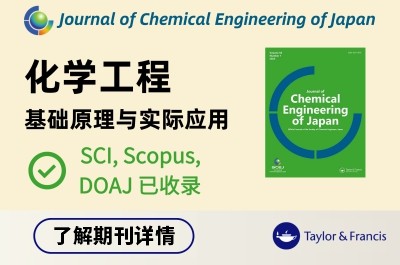



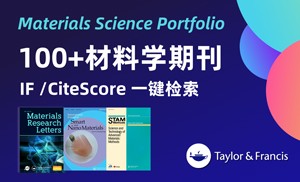

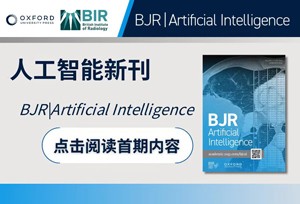
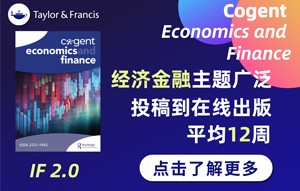

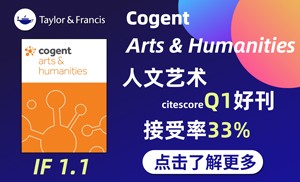
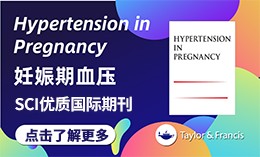







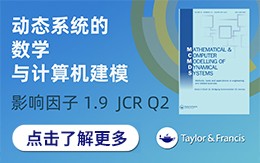

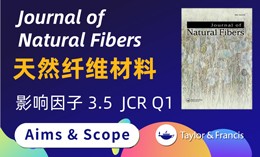
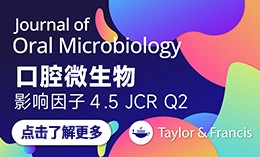
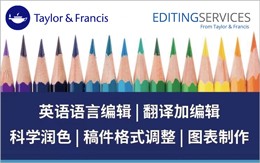



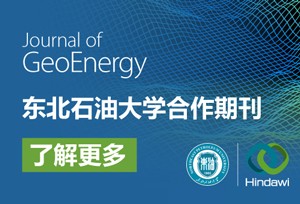
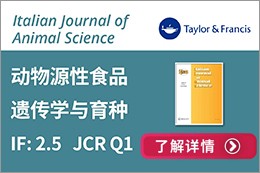














 京公网安备 11010802027423号
京公网安备 11010802027423号